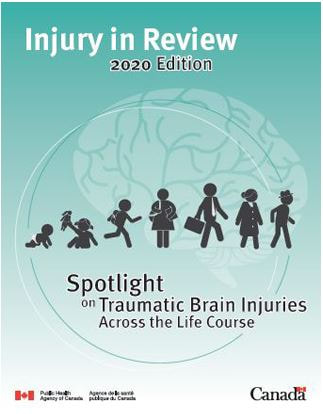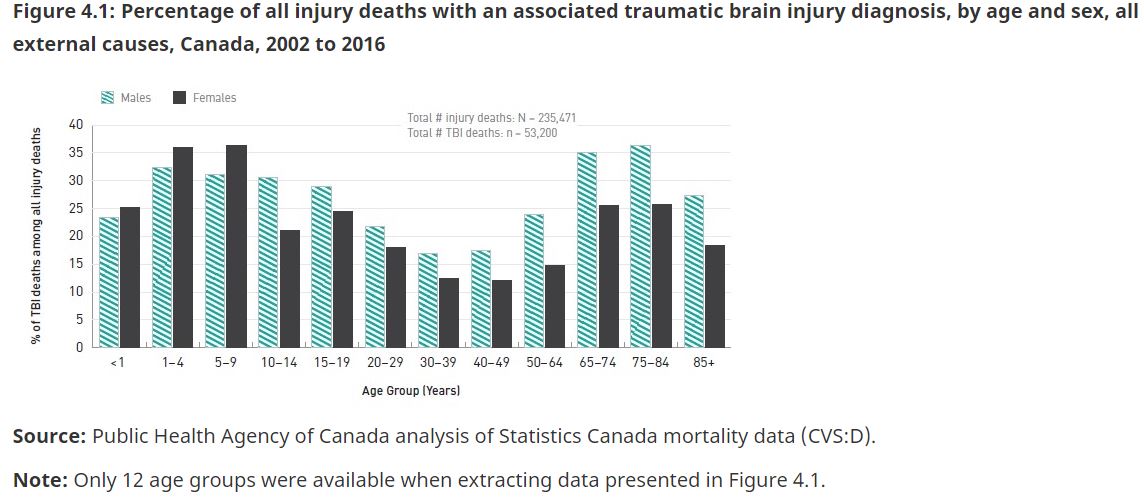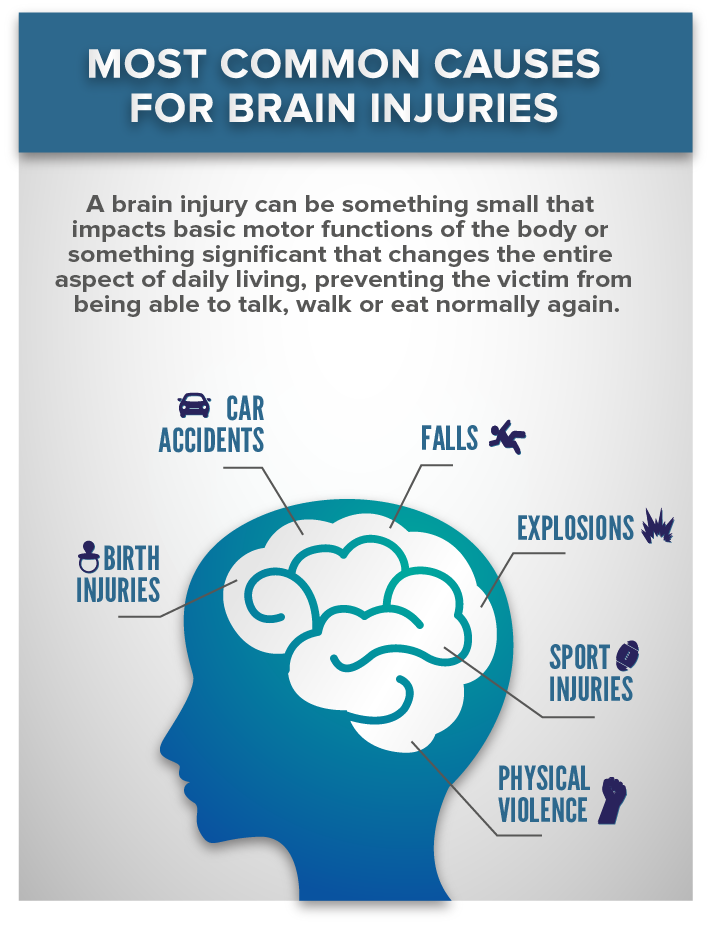Traumatic Brain Injury (TBI) Statistics
TBI General Statistics
By 2031, traumatic brain injury (TBI) is expected to be among the most common neurological conditions affecting Canadians, along with Alzheimer’s disease and other dementias, and epilepsy.
TBI is a leading cause of disability globally. In Canada, 2% of the population lives with a TBI, and there are 18,000 hospitalizations for TBI each year. One-third of individuals with a TBI are women, and TBI is particularly common early in the reproductive years (15-24 years), with intimate partner violence and accidents being major causes. Women with TBI are more likely than men to experience mental health problems post-injury.
Please note: The following series of stats has been extrapolated from United States data to the population of Canada.
TBI occurs at an annual rate of 500 out of 100,000 individuals. That is approximately 165,000 in Canada. This equals 456 people every day, or one person injured every 3 minutes in Canada.
TBI occurs at a rate of 100 times that of spinal cord injury.
Source: Statistics - Brain Injury Canada
TBI is a leading cause of disability globally. In Canada, 2% of the population lives with a TBI, and there are 18,000 hospitalizations for TBI each year. One-third of individuals with a TBI are women, and TBI is particularly common early in the reproductive years (15-24 years), with intimate partner violence and accidents being major causes. Women with TBI are more likely than men to experience mental health problems post-injury.
Please note: The following series of stats has been extrapolated from United States data to the population of Canada.
TBI occurs at an annual rate of 500 out of 100,000 individuals. That is approximately 165,000 in Canada. This equals 456 people every day, or one person injured every 3 minutes in Canada.
TBI occurs at a rate of 100 times that of spinal cord injury.
Source: Statistics - Brain Injury Canada
A comparison of TBI and other prevalent disease, illness or injury
- 26,900 Canadian women will be diagnosed with breast cancer.
- An estimated 4,300 new cases of Spinal Cord Injury occur each year in Canada.
- 4015 Canadian will be diagnosed with Multiple Sclerosis in the next year.
- 165,000 Canadians will have a traumatic brain injury this year.
- Indirect economic costs due to working-age disability will increase and will be greatest for hospitalized traumatic brain injury (rising from $7.3 billion in 2011 to $8.2 billion in 2031).
- Falls are the leading cause of TBI among seniors.
- Teens, young adults and seniors are at higher risk of TBI as a pedestrian. Across the life course, the data provided evidence of increased TBI risk among pedestrians leading up to and during the teenage years; risk declined during early adulthood before increasing in middle-age and climbing to high levels among seniors.
- Female pedestrians have a higher frequency of TBI than males, although the highest risk group is males aged 65 years or older.
- Brain injury is also identified as a risk factor for Alzheimer’s disease and other dementias in men, and for epilepsy in both sexes.
- Falls are the most frequent reason for TBI hospitalizations and emergency department (ED) visits among children under 5 years of age.
- Among children and youth aged 5 to 19, sports and recreational activities emerge as a leading cause of TBI-related hospitalizations and ED visits.
- Assaults are a leading cause of TBI hospitalizations and ED visits among males 20 to 39 years of age.
- From age 40 years and onward, falls not related to sports and recreation take over as the predominant mechanism of TBI-related deaths, hospitalizations and ED visits, with especially high rates among those 85 years and older.
Death and Disability - Children, Youth and Young Adults: |
30 percent of all brain injuries in Canada are suffered by children and youth.
Source: Ontario Brain Injury Association (OBIA) |
“Silent Epidemic”: |
In Ontario there are almost a half a million people living with a brain injury and 18,000 new cases are added every year.
Source: OBIA (Ontario Brain Injury Association) Impact Report, 2012 |
Emergency Department Visits Ontario and Alberta: |
More than 90% of ED visits for sports-related brain injuries receive a concussion diagnosis
July 26/16: Over the last 5 years, the number of emergency department (ED) visits for sport-related brain injuries increased significantly in Ontario and Alberta. According to the newest injury and trauma data from the Canadian Institute for Health Information (CIHI), more than 9 out of 10 (94%) ED visits for sport-related brain injuries in 2014–2015 were concussion related. Furthermore, more than 6 out of 10 ED visits for sport-related brain injuries (62%) were made by males. Hockey, cycling and football/rugby were the sports that sent the largest number of patients to the ED for brain injuries. The number of ED visits for brain injuries from hockey was almost double that from cycling, football/rugby and skiing/snowboarding. Other causes of brain injury–related ED visits included being hit by a ball. Source: https://www.cihi.ca/en/types-of-care/specialized-services/ed-visits-for-sport-related-brain-injuries |
|
Every two days a Durham Region resident dies as a result of an injury.
Elementary and secondary school students:
In 2011-2012, 19% of Durham Region elementary school students and 31% of secondary school students reported they had experienced a head injury in their lifetime. While the results were comparable to Ontario for elementary school students, more secondary school students experienced a head injury in their lifetime in Durham as compared to the Ontario average of 22%. |
Who Suffers from a TBI?:
Traumatic Brain Injury causes and consequences permeate all areas of society, all age groups:
And most importantly…. families…. who must try to navigate and survive the tsunami of pain and devastation from brain injury. The ripple effect from brain injury is tremendous, as many family members become lifelong caregivers to their disabled loved ones.
- Health care systems: Medical, Rehabilitation, Mental Health, Substance Use and Abuse
- Sports and Leisure
- Senior Care
- Emergency Service systems: Police, Fire, EMS and military
- Justice and Correctional Systems: 40% of Female Prisoners Enter theCorrectional System with a Traumatic Brain Injury; (Dr. Angela Colantonio et al, Journal of Correctional Health Care, July 2014)
- Homelessness: Almost 50% of homeless men had traumatic braininjury in their lifetime, vast majority before they lost their homes; (St. Michael’s Hospital, 2014)
- Workplaces
- Education systems: Elementary, secondary and post-secondary
And most importantly…. families…. who must try to navigate and survive the tsunami of pain and devastation from brain injury. The ripple effect from brain injury is tremendous, as many family members become lifelong caregivers to their disabled loved ones.









